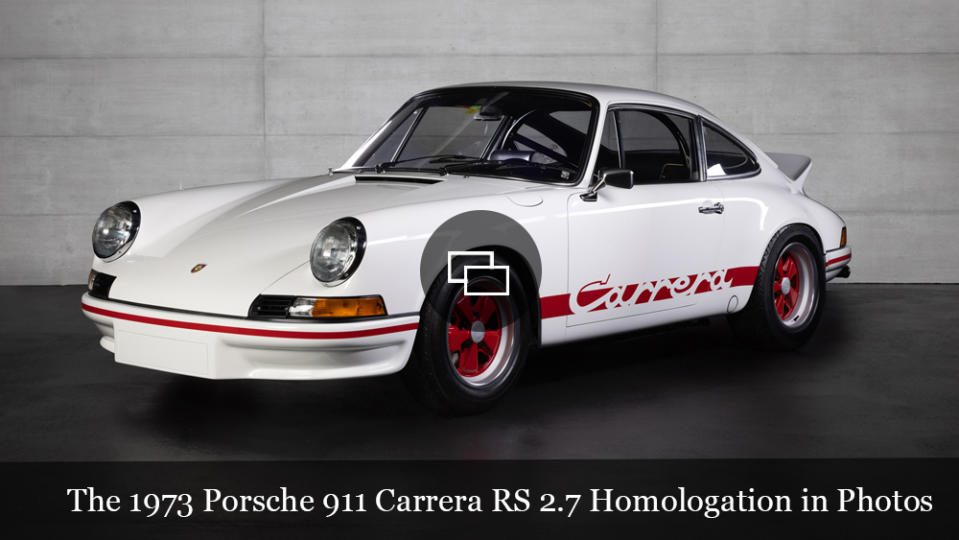This Ultra-Rare 1973 Porsche 911 Could Fetch up to $2.5 Million at Auction

For ardent Porsche purists, there’s arguably only one 911 in the model’s fabled 51-year history that stands head, shoulders, and ducktail spoiler above all others—the 1973 Porsche 911 Carrera RS 2.7 Homologation, also known as the famed Carrera RSH. Only 17 of these lightweight road rockets were built, and one of the finest examples is set to go under the hammer at Gooding & Company’s Amelia Island Auction on March 1.
Still in concours condition after an exhaustive restoration by top RS specialist Nate Cantwell, this example, in Grand Prix White and featuring retina-searing red striping, bright red Fuchs wheels, and that iconic Carrera script between the doors, was recently owned by well-known Southern California–based RS collector Dr. Richard Moran.
More from Robb Report
Car of the Week: This 1962 Corvette Has Been Impeccably Preserved. Now It's Up for Grabs.
This Feather-Light Carbon-Fiber Porsche 912 Restomod Weighs Less Than 1,600 Pounds
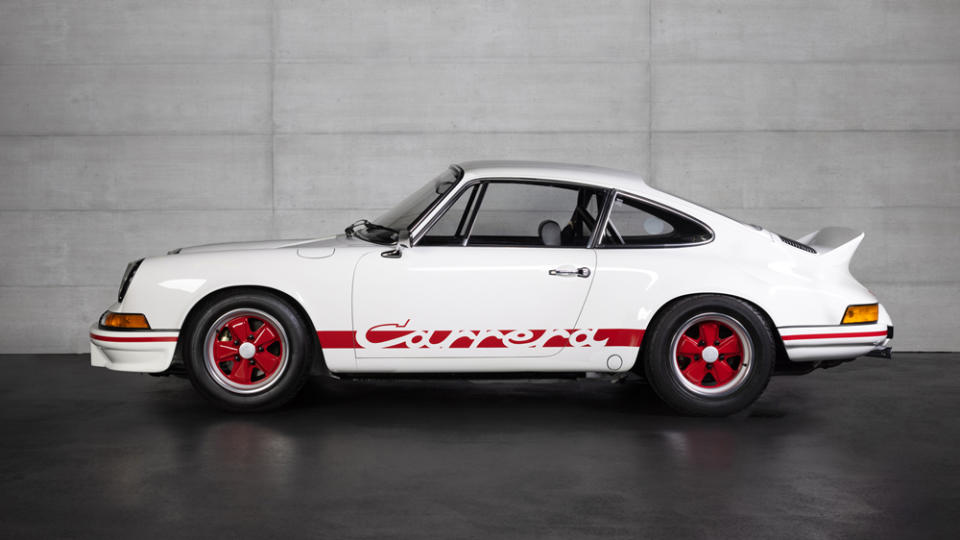
Developed to challenge the FIA’s hard-fought Group 4 GT race series, the 911 Carrera RS was debuted by Porsche at the 1972 Paris Auto Show. To compete, the German marque had to build and sell at least 500 examples. While it ended up building a total of 1,525 examples, only the first 17 off the production line were designated as RS Homologation models.
As with the subsequent 200 examples of the Carrera RS Lightweight, the 1,308 units of the RS Touring, and the 55 full-on RSR race cars, the RSH was based on a lightened 1973 911 S coupe. Modifications included the addition of flared front and rear fenders to accommodate wider wheels and tires, weight-reducing thinner-gauge body panels, slimmer glass, and an upgraded suspension. It also came with that iconic “ducktail” engine-lid spoiler, proven in the wind tunnel to reduce rear-end lift at high speed.
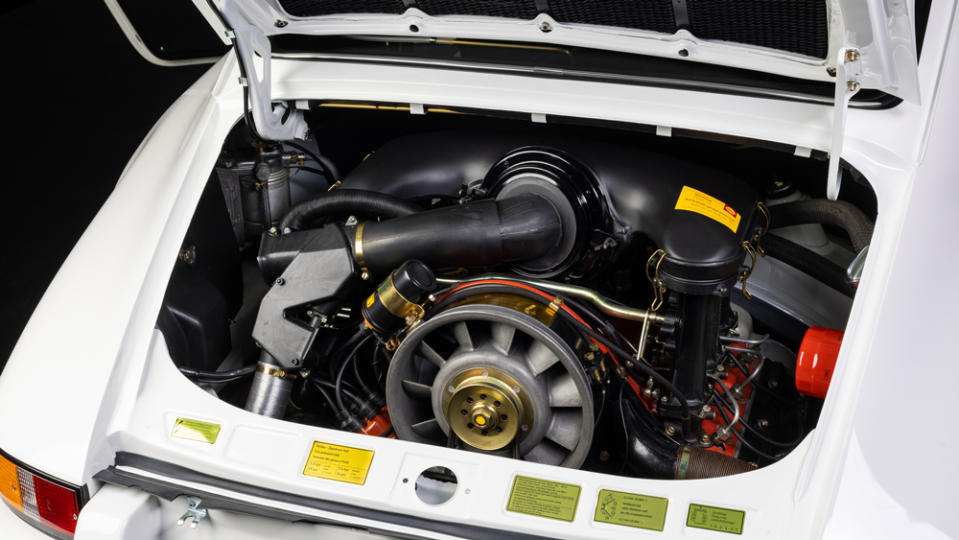
Inside, the weight-savings continued with cloth-covered Recaro bucket seats, thinner door panels, and wafer-thin felt carpeting. The small rear seats were jettisoned, along with the glovebox lid, clock, sun visors, and any sound-deadening materials. The result is a car that tips the scales at a mere 2,116 pounds.
Under that lightweight fiberglass rear lid, the already potent 2.4-liter flat-six engine from the 911 S was uprated to 2.7 liters to crank out 210 hp and 188 ft lbs of torque. This mill allows the RS to punch from standstill to 60 mph in 5.5 seconds, hit 100 mph in 10 seconds, and max out at around 150 mph.
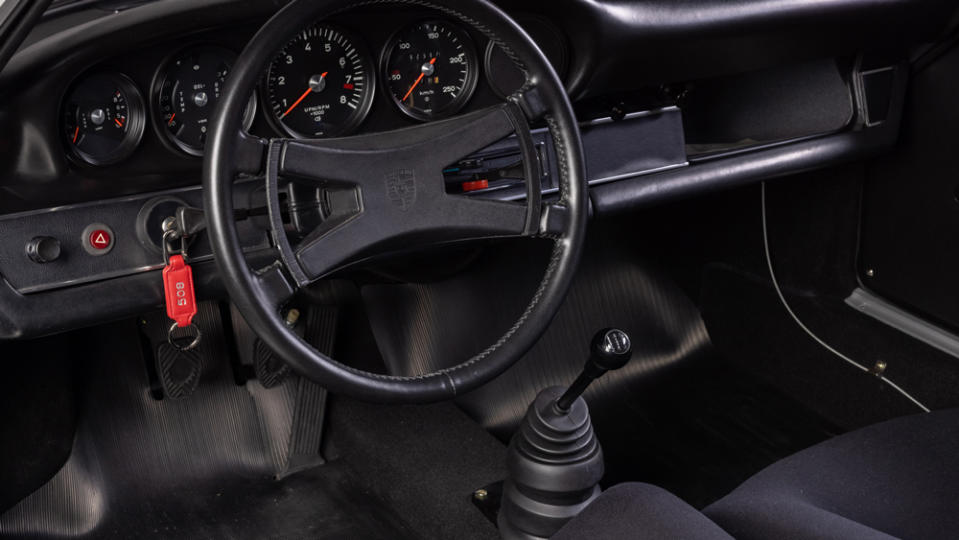
At the time, the 911 RS (short for “rennsport,” which translates to “racing sport”) was perhaps the most exciting all-round sports car money could buy, having tremendous appeal among weekend racers for its ability to be ultra-competitive on the track, yet equally capable and fun to drive on the way home.
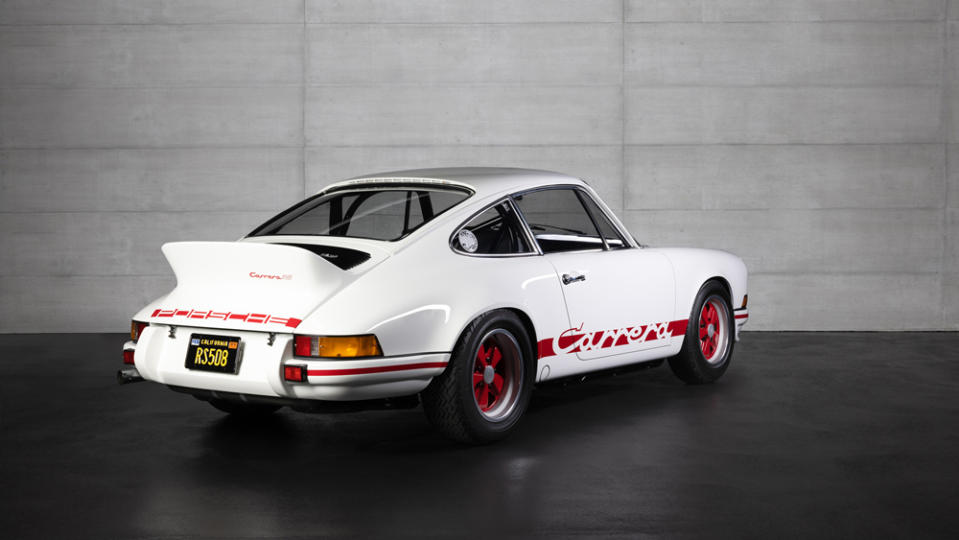
Even if this particular 911 Carrera RS 2.7 Homologation sells for Gooding’s $2.5 million top estimate, it wouldn’t beat the famous 2022 Sally Special, inspired by the Sally Carrera 911 from the Pixar movie Cars. In 2022, that one-off crossed the block through RM Sotheby’s for charity, fetching $3.6 million and setting the current sales record for a new Porsche at auction.
Click here for more photos of this 1973 Porsche 911 Carrera RS 2.7 Homologation.
Best of Robb Report
Sign up for Robb Report's Newsletter. For the latest news, follow us on Facebook, Twitter, and Instagram.
